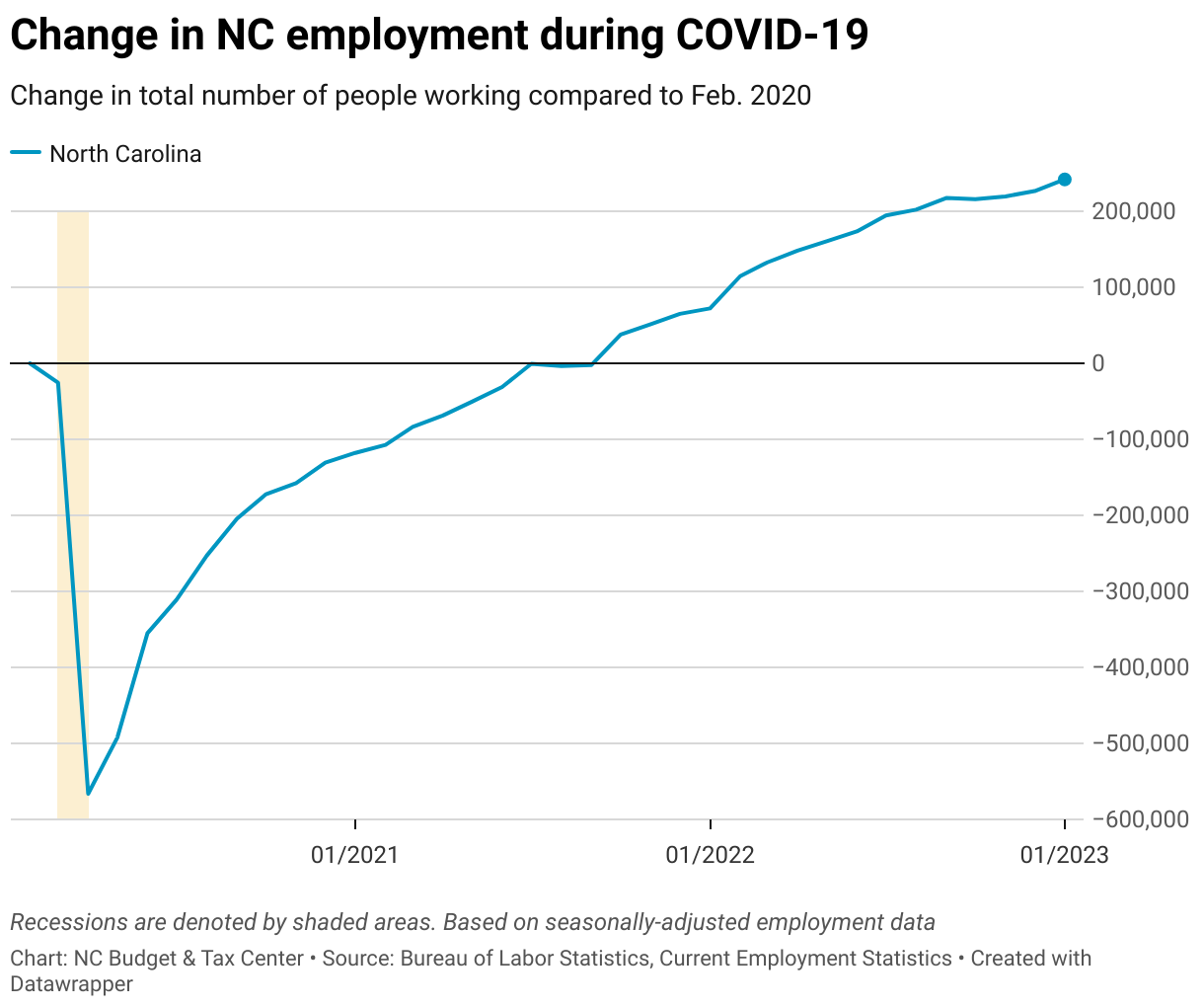
Slowing job growth and gaping holes in the recovery clear in new NC employment figures
After revising data for the past few years, the Bureau of Labor Statistics released employment figures for January of 2023 this week. The new data paint a clearer picture of how hiring slowed last year and where the economic recovery from COVID-19 remains incomplete. We’re still seeing decent jobs growth, but many communities and public services are being left behind in North Carolina.
Expiration of federal stimulus, economic headwinds slowed job growth last year
While job growth last year was generally still strong at the state level, the pace of employment gains slowed compared to the previous year. North Carolina added 161,500 jobs in 2022 compared to 195,800 in 2021, as a variety of factors combined to cool the labor market somewhat. First, most of the federal COVID aid that had supported families during the pandemic has come to an end. That means less money in consumers’ pockets and some barriers (like child care) making it harder for many people to get jobs.
At the same time, a series of storm clouds loomed over the economy. Rising interest rates put the breaks on hiring in some sectors, particularly growth-oriented technology and media companies. Some major employers, many with large presences in North Carolina like Google, Facebook, and Amazon, announced layoffs (although in most cases their workforces are still significantly larger than they were before COVID-19). Worries of a possible recession also dogged business leaders and investors last year, creating a more cautious approach to hiring in many industries than existed in 2021.
Many economists are more optimistic now that the Federal reserve can engineer a “soft landing” (getting inflation under control without pushing us into a recession) than they were in the first half of last year, but the uncertainty that dogged employers all of last year hasn’t disappeared. Preliminary data indicate North Carolina got 2023 off to a good start with more than 15,000 net new jobs, but that estimate is subject to revision.
One major question facing elected leaders in North Carolina is how to prepare the state for a potential downturn. In the absence of federal aid during COVID-19, hundreds of thousands of North Carolinians could have faced eviction, hunger, lack of health care, and other harms that come with a recession. We have not fixed the holes in our systems (like unemployment insurance or child care) that got plugged by federal aid during the worst of the pandemic, and those vulnerabilities will come back to haunt working North Carolinians again when the next economic decline happens.
Lack of rural and government employment recovery
New data did not fundamentally change a now long-standing reality where job growth across most of the state lags far behind a handful of major cities. Nearly half of the counties in North Carolina still have fewer residents working than before COVID-19, now almost three years into the pandemic. Roughly half of the net job growth during COVID-19 and over the past year happened in either the Triangle or Charlotte. The state’s metropolitan areas collectively account for almost three-quarters of the net job growth in 2022, clear evidence that we have not done enough to boost job growth in many smaller towns and rural communities.
As anyone who has had to rush to pick up their kids because a bus driver was out, or who has waited through an interminable line at the DMV, or who worries their drinking water hasn’t been tested recently would attest, we have completely failed to give state and education employees the raises they need to remain in public service. The result is that government employment remains the only sector that is still far away from pre-pandemic levels. Jobs figures indicate that we are more than 20,000 government jobs short of where North Carolina stood before the pandemic. In many cases, it’s not because those jobs have been eliminated. With public wages falling well short of inflation over the past few years, many public servants have been forced to find new lines of work and agencies have struggled to find new staff to fill their roles. Again, here we see the impacts of austerity budgets on vital public services, harm that would be greatly compounded if an economic downturn happens.



